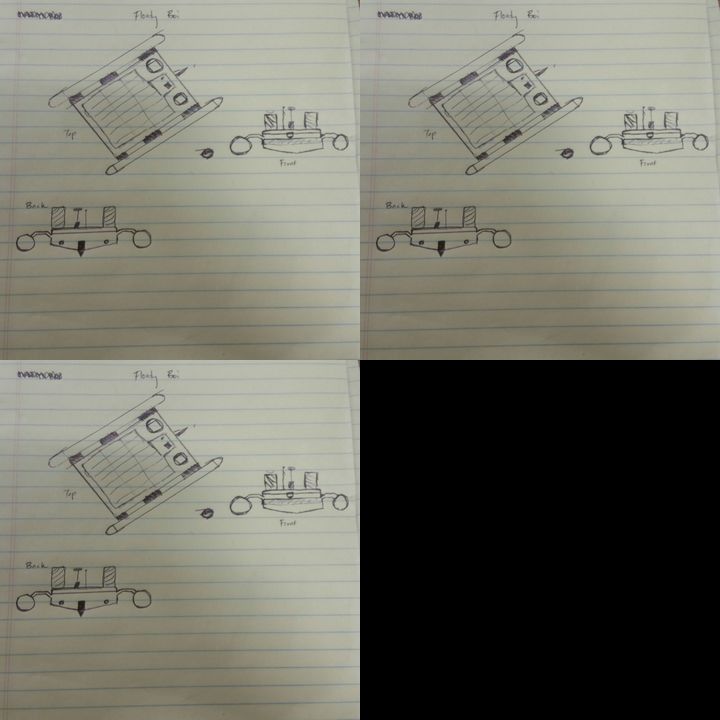F.L.O.A.T.I.B.O.I.
The Problem
There are an estimated 150 million metric tons of plastic trash in the ocean, with an estimated 8 million added each year (Jambek et al, 2015). 7.764 million out of the 8 million tons added annually are macroplastics (Sebille et al, 2015). Plastic pollution like water bottles, plastic bags, and styrofoam from coastlines face no barriers getting out to deep sea, where they break down into microplastics, becoming more difficult to clean up. These microplastics negatively affect marine biodiversity and ultimately, all life on the planet. Furthermore, existing solutions to prevent plastics from reaching deep sea have no means to distinguish between plastics and marine life.
Our Proposal
We propose a method to actively prevent plastic from going out to sea by collecting it in nearshore waters while it is still mostly intact - F.L.O.A.T.I.B.O.I. (Floating Long-term Oceanic Autonomous Trawler Incorporating Buoyant Object Identification). F.L.O.A.T.I.B.O.I. is an an aquatic robot that uses optical identification to collect marine plastic. It will harness renewable energy to keep its carbon footprint low, and artificial intelligence to aid with object identification.
We Assume that...
1. We are assuming that small/medium macroplastics are a primary driver of ocean pollution and declining health of marine life.
2. We are assuming that removing marine plastic pollution from coastal waters is an effective method to mitigate the formation of marine microplastics.
3. We assume that at least one form of renewable power (sunlight, wind, waves) will be present in F.L.O.A.T.I.B.O.I.’s environment at all times.
4. We assume F.L.O.A.T.I.B.O.I. being a preventative solution will mitigate/help the overall problem of ocean plastic pollution.
Constraints to Overcome
The technical capabilities to create some solutions to marine plastic pollution exist, but resources - time and money - haven’t yet been invested in engineering projects dealing with this issue. NOAA estimated in 2015 that cleaning up less than 1% of the north Pacific Ocean would cost between “$122 million and $489 million for the year” using large boats with nets for the cleanup. Addressing the high overhead and operational costs by creating a much lower-cost solution focusing on prevention rather than cleanup will allow us to make more progress towards stopping plastic from entering our oceans in the first place.
Current Work
-Successfully implement a prototype by the end of the 2018-2019 academic year. -In conjunction with prototype testing and implementation, start an organization centered around the work F.L.O.A.T.I.B.O.I. is doing to more easily engage with future partners and key entities. -Provide one instance of active, autonomous solution to marine plastic pollution. -Biodiversity conservation through marine plastic pollution mitigation. -Develop partnerships to repurpose collected marine plastic.
Current Needs
Mechanical engineering skills, funding, access to water, building and prototyping supplies, machining and access to tools (electrical and/or mechanical), expertise in artificial intelligence
